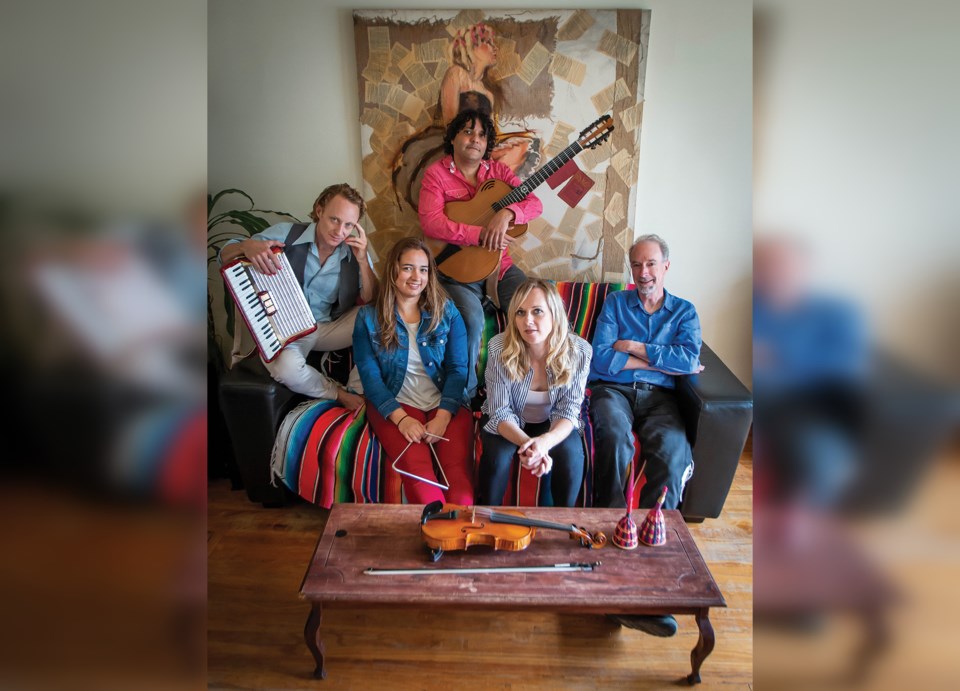An intoxicating form of Brazilian folk music will return to the Sunshine Coast this weekend for its first local hearing since the pandemic hushed performance halls three years ago.
The five-member Forró do Cana ensemble, which specializes in forró music of northeast Brazil, will perform at the High Beam Dreams event venue on Saturday, April 1.
The group was founded in 2018 by Serena Eades. Eades, whose home is on the Coast, operates a music academy for violin students from Powell River to Gibsons. As a volunteer, she also coordinates the strings discipline of the annual Sunshine Coast Festival of the Performing Arts.
It was while studying at Boston’s Berklee College of Music a decade ago that Eades—rooted in fiddle repertoire and Celtic traditions—first encountered forró (pronounced faw-haw).
“I heard this music played on a Brazilian fiddle called a Rabeca,” Eades said, “and I just got super intrigued by it. I was talking with a friend of mine about how we wanted to be playing in Vancouver. She is Brazilian, a dancer and a percussionist. So, we recruited some band members that we thought would be a good fit. And now we have people follow us around and show up at gigs out of town, just because they want to dance forró.”
Latent demand from Brazilian expatriates in the Lower Mainland drove the group’s early popularity. Forró rhythms are distinct from the widespread samba and bossa nova styles, which originate in Brazil’s south. Over centuries in the country’s northeast, slaves combined African rhythms from Angola, Portuguese instruments imported by the country’s colonizers, and Indigenous influences to produce a unique style of folkloric music.
The distinctive forró sound comes from its three primary instruments: triangle, bass drum (known as a Zumba) and accordion.
Unlike other genres of Latin music intended to accompany partner dancing and fleet-footed showmanship, forró inspires unrestrained movement. “If you go to Northeastern Brazil and go to a full forró party,” said Eades, “it would be many hours long and you’d have very tired calves.”
Eades, who will play the four-stringed Rabeca at the upcoming Gibsons performance, will be accompanied by Steve Charles (acoustic guitar), Liam Macdonald (percussion), Igor Moreno (accordion), and Sara Magal (percussion and vocals). Both Moreno and Magal are originally from Brazil.
The tongue-twisting lyrics delivered in rapid-fire fashion by Magal reflect the genre’s pastoral roots. Historians have theorized that farmers originally sang about cultivating crops and herding animals.
Flexibility is the music’s hallmark: in fact, forró can refer to the type of party at which its tunes are performed, or one of three distinct rhythms (the others are slow-paced xote and baião, a deftly-syncopated beat).
Eades observes that because of forró’s pervasiveness in Brazil, its practitioners will often start as dancers and later become musicians. “That’s different than elsewhere in the world,” she said, “where musicians begin as instrumentalists, and then, once they learn about forró, become forrozeiro.”
The group had its Sunshine Coast debut in 2019. The April 1 show at High Beam Dreams starts at 6:30 p.m. Tickets are available online via highbeamdreams.com.



